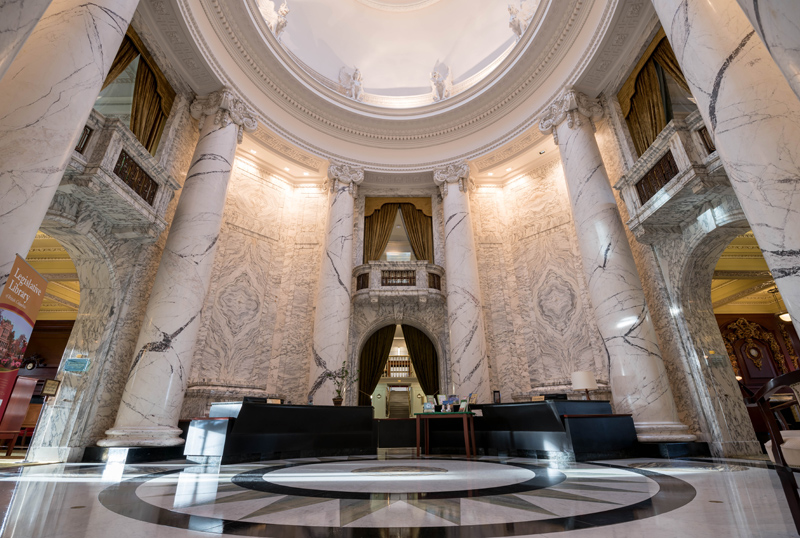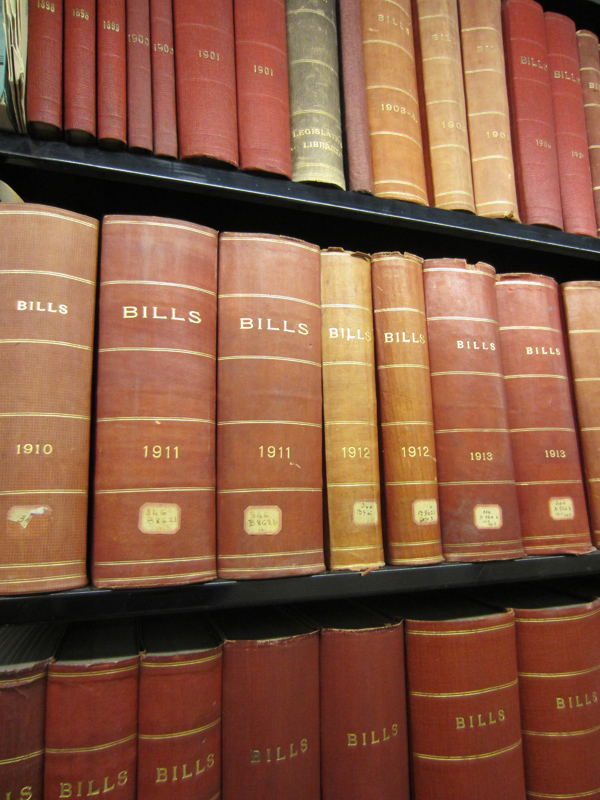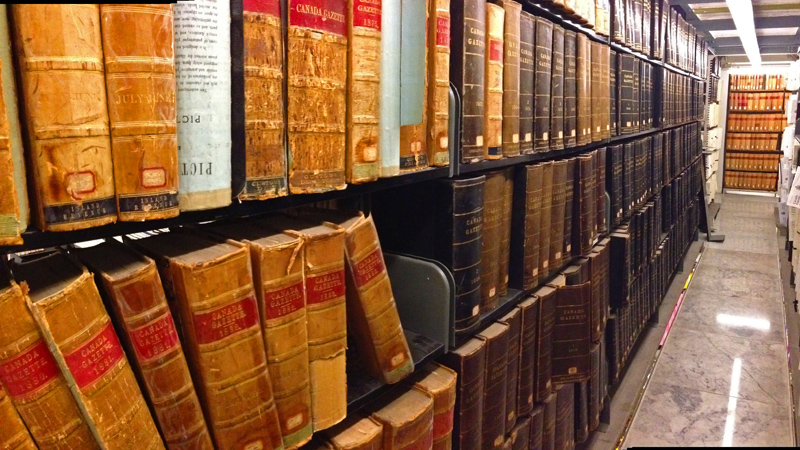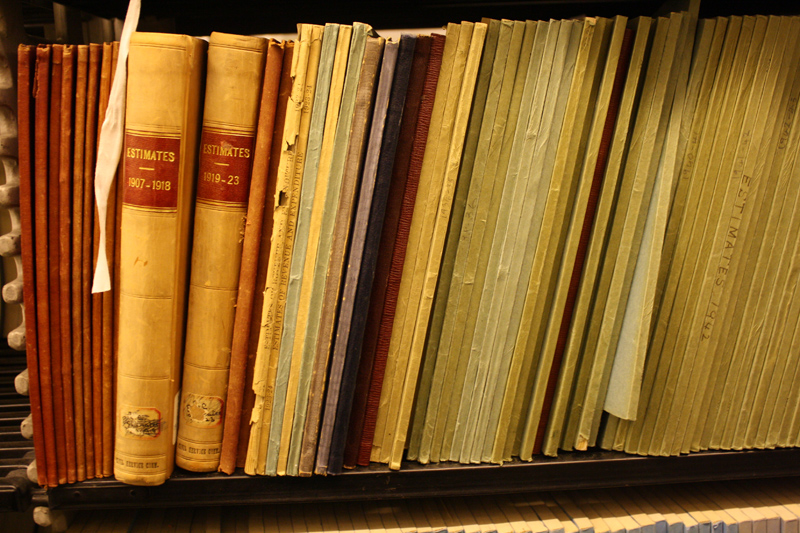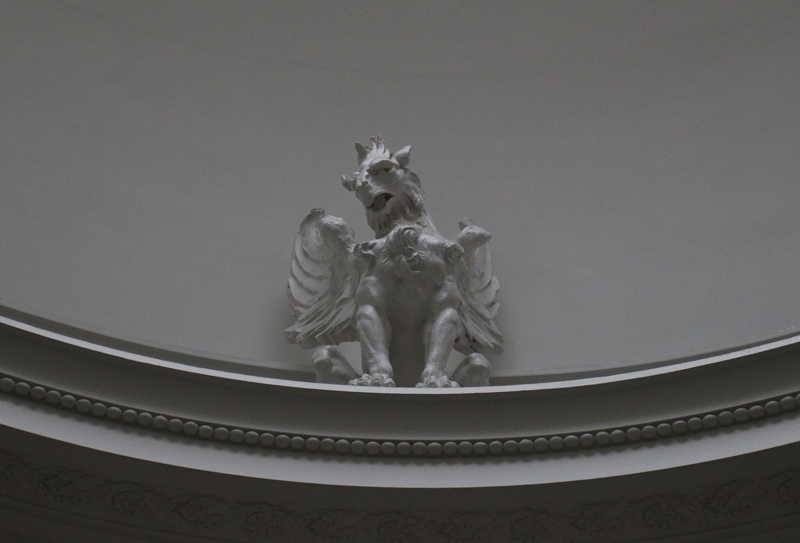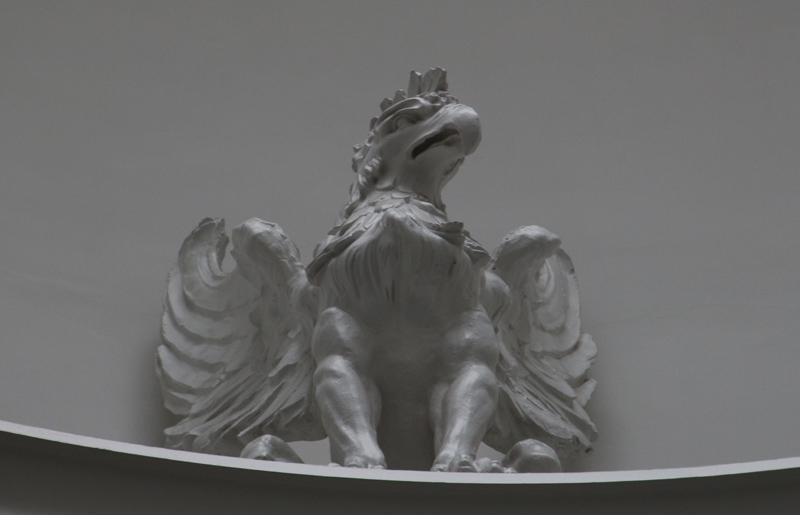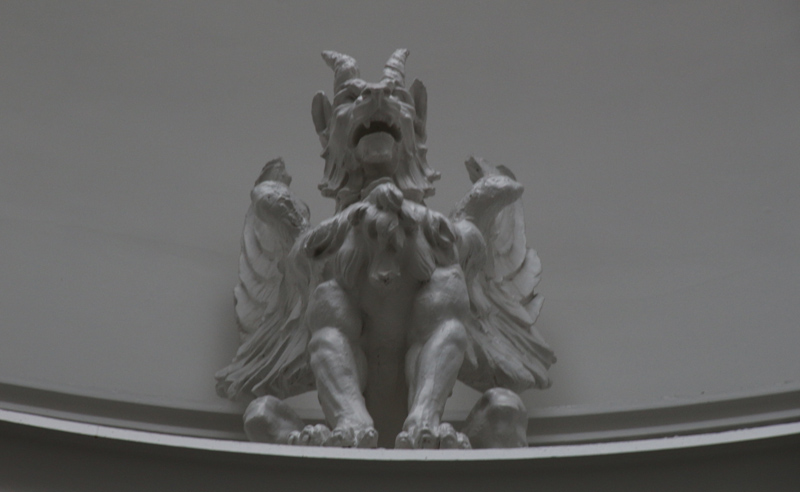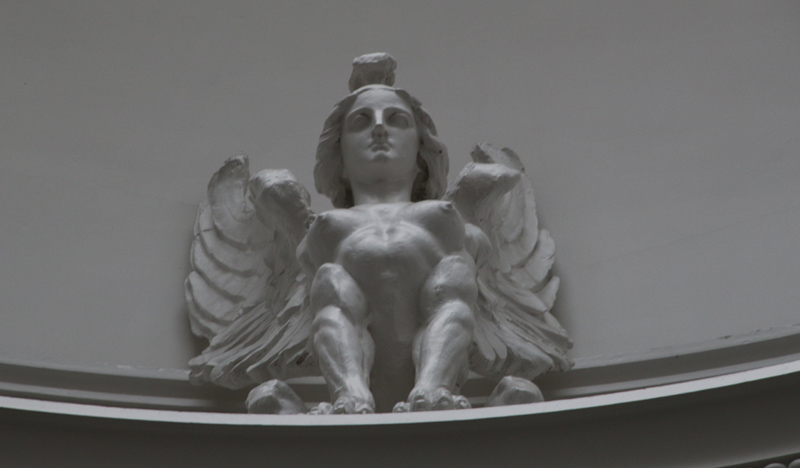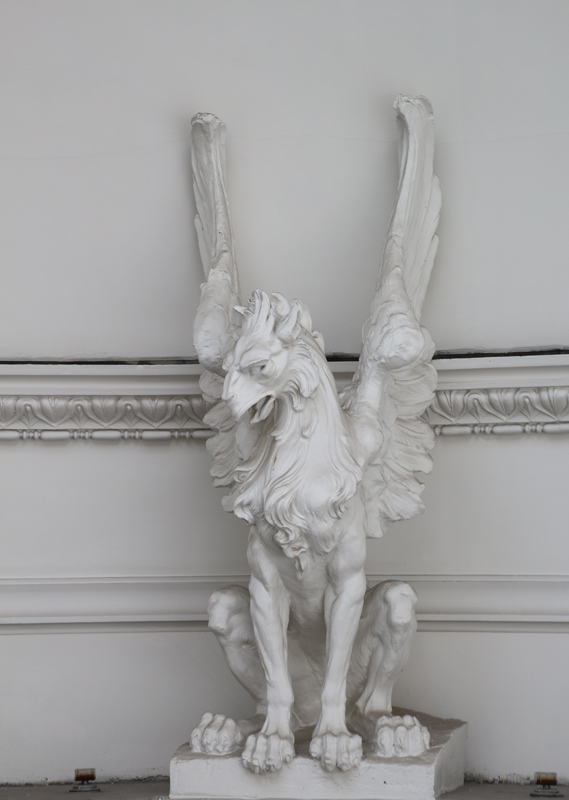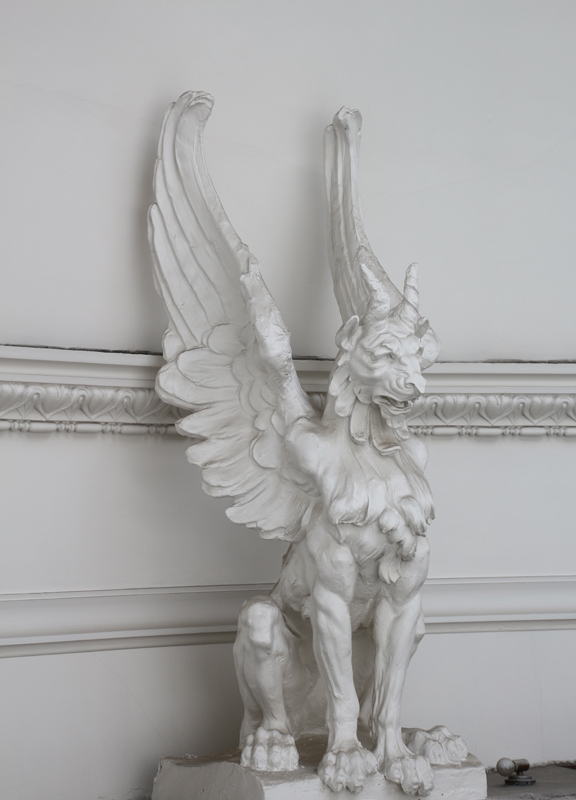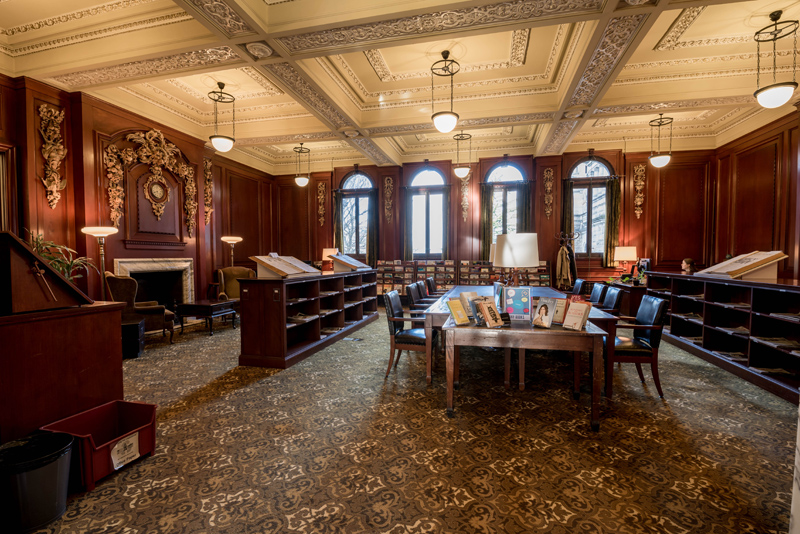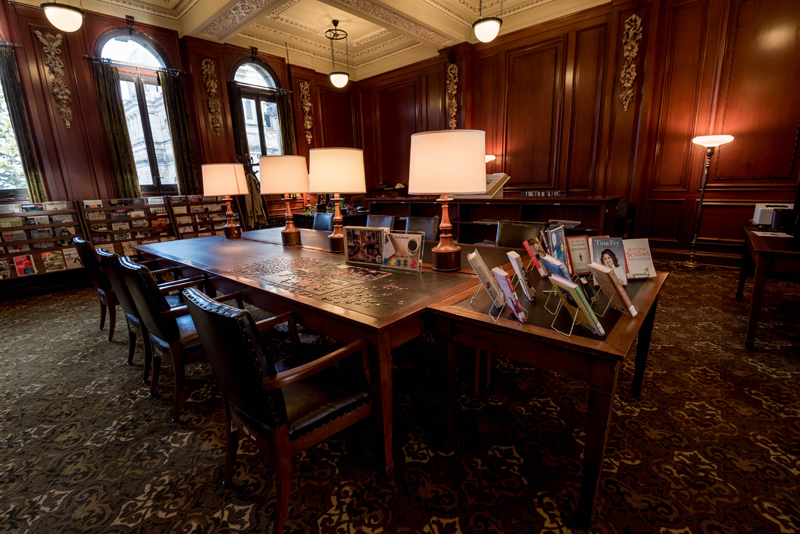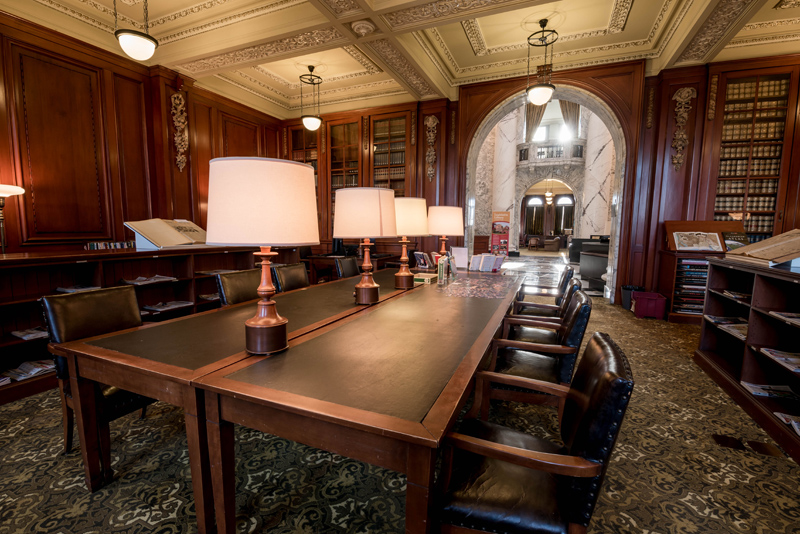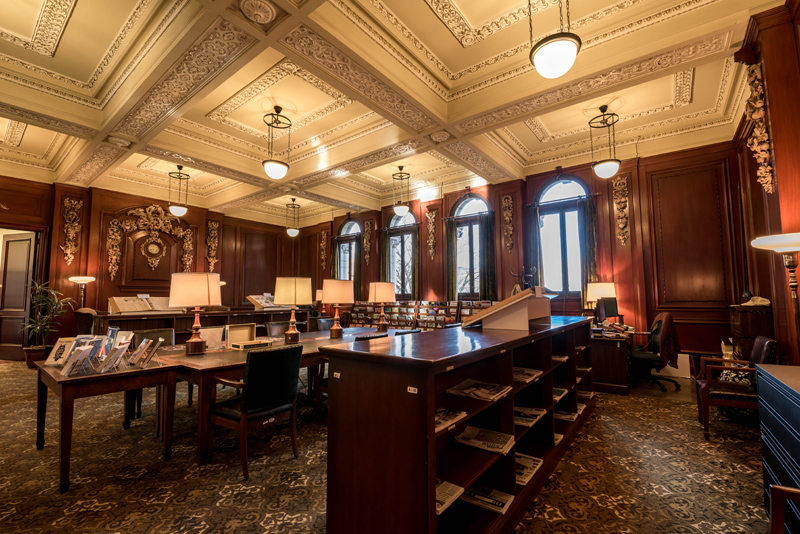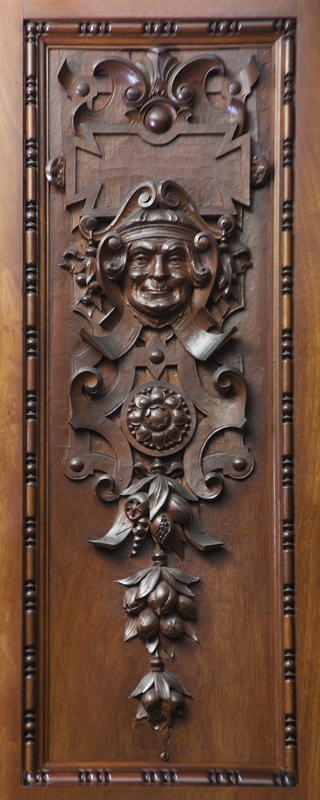The primary entryway to the Legislative Library is located along the Speaker’s Corridor, just behind the Legislative Chamber on the second floor of the Parliament Buildings. As one proceeds down the hallway towards the Library, its rotunda and reference desk become increasingly visible, and there is growing anticipation of the splendour to be revealed.
The Library Rotunda is three stories high with gallery openings on the second floor. It is finished in Italian Carrara marble and punctuated with eight giant columns, a perfect complement to the architectural style of the rest of the Parliament Buildings. The walls are paneled in marble and the rotunda’s impressive eight columns are made from scagliola, an Italian neo-classical revival of stone and plaster intended to imitate marble. One architectural critic humorously noted that the impression upon entering the Legislative Library was “not that you’ve come to study, but that you have drowned in a Roman bathhouse.” However, most visitors agree that the Library Rotunda reflects the dramatic splendour and decadence of the late imperial age. One striking feature of the rotunda are large heraldic beasts (called Grotesques) that peer down from the dome.
The two reading rooms adjacent to the library rotunda are paneled in mahogany and decorated with elaborate wood carvings. One of the rooms features a fine example of hand-carved lime wood in the style of 17th century English sculptor Grinling Gibbons, created by H.H. Martyn & Co., of Cheltenham, England, also known as the "Cheltenham School."
The vast catalogue of the Legislative Library is spread out over seven floors, accessed by staff using stairways, a dumbwaiter, and the second-oldest working elevator in Victoria. The oldest is reportedly at the former law courts building in Bastion Square (also formerly the Maritime Museum of British Columbia).
The room that presently serves as an entry area to the lower level of the Legislative Library was once commonly known as the "Torpedo Room." A World War I vintage torpedo was stored there for many years. It is presently the School Entrance for the thousands of students who tour the Parliament Buildings each year.
